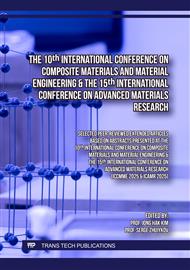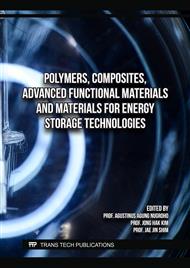p.3
p.11
p.17
p.23
p.31
p.39
p.45
p.55
Numerical Investigation on Failure Mechanism of Welding Reinforced Joint for Fiber Reinforced Thermoplastic Pipe
Abstract:
The various joints employed in high-pressure reinforced thermoplastic composite pipes (RTPs) face several challenges, including large outer diameters, complex traversal structures, and susceptibility to corrosion. To address these issues, this paper proposes a welding-reinforced joint structure and investigates its failure mechanism under tensile loading. Based on the 3D Hashin failure criterion, VUMAT subroutines were developed to model the exponential damage evolution of both unidirectional fiber-reinforced and woven composites. A three-dimensional finite element mode was established to perform dynamic analysis under tensile conditions, incorporating a cohesive zone model and VUMAT. The analysis results show that as tensile displacement increases, the bonding interface undergoes gradual debonding, with separation starting at the ends of the joint and propagating toward the middle. Once the interface is fully debonded, the high-density polyethylene (HDPE) in the welding region fails immediately. The maximum failure factors for both the RTP and the joint occur at the edges of the remaining bonding interface. his finding is consistent with the dynamic pattern of interface damage and failure.
Info:
Periodical:
Pages:
17-22
Citation:
Online since:
June 2025
Authors:
Price:
Сopyright:
© 2025 Trans Tech Publications Ltd. All Rights Reserved
Share:
Citation:



